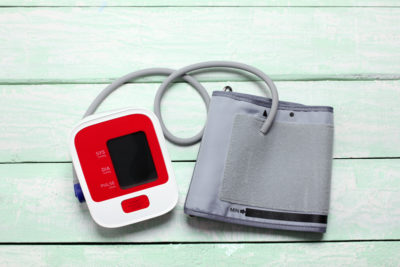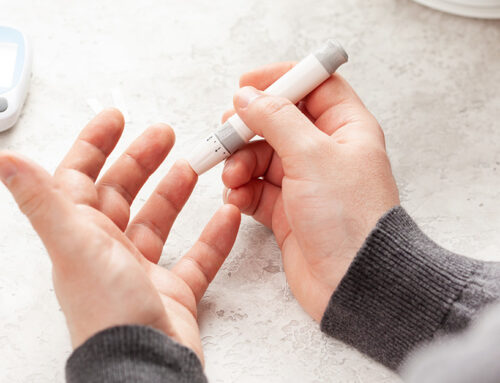We all hear about the risks associated with high blood pressure, but having low blood pressure can also pose health risks.
 When you have low blood pressure your blood, which carries oxygen and nutrients, is not being sufficiently pushed into the tissues throughout your body, including the brain. This means your brain and other organs are not getting enough oxygen to work as well as they could. A blood pressure of 120/80 is considered healthy and if the upper or lower number deviates by 10 your blood pressure is in an abnormal range.
When you have low blood pressure your blood, which carries oxygen and nutrients, is not being sufficiently pushed into the tissues throughout your body, including the brain. This means your brain and other organs are not getting enough oxygen to work as well as they could. A blood pressure of 120/80 is considered healthy and if the upper or lower number deviates by 10 your blood pressure is in an abnormal range.
People with poorly managed hypothyroidism may also have problems with blood flow and oxygenation, which compounds the effects of low blood pressure.
Low blood pressure associated with adrenal fatigue
Low blood pressure is typically associated with poor adrenal function. The adrenal glands, which sit atop the kidneys, produce stress hormones and play an important role in regulating blood pressure. Many people today have fatigued adrenal glands thanks to chronic stress, poor diets, low blood sugar, chronic infections, digestive problems, inflammation, or other issues. Chronic stress from any or all of these factors may wear out the adrenal glands, causing adrenal fatigue. As a result, your body has a harder time maintaining health and balance through life’s ups and downs. Symptoms of adrenal fatigue may include constant tiredness, hypoglycemia (low blood sugar), and low blood pressure.
It’s not uncommon for people with hypothyroidism to also suffer from some form of adrenal imbalance, including adrenal fatigue.
Feeling faint when you stand up
A common type of low blood pressure is a orthostatic hypotension, a drop in blood pressure when you go from sitting to standing that causes lightheadedness. For the person with orthostatic hypotension, standing up causes blood to pool in the legs. This slows the flow of blood back to the heart and decreases the amount of blood pumped from the heart. Medical professionals diagnose orthostatic hypotension when the top number falls by 20 and the bottom number falls by 10 upon standing.
Although lightheadedness is not cause for alarm, if standing up causes you to faint you should seek medical attention. Orthostatic hypotension also increases the risk of falling for elderly people. Orthostatic hypotension is common among people with low blood pressure and hypoglycemia, although people with high blood pressure can also have orthostatic hypotension.
What to do for low blood pressure and adrenal fatigue
If you have low blood pressure and suspect you may have adrenal fatigue, consider having an adrenal saliva test. This test measures how much cortisol, an important adrenal hormone, your body makes, and whether your cortisol level follows healthy daily patterns.
Although people with high blood pressure are told to avoid salt, those with low blood pressure may actually benefit by adding sea salt to their food.
Also, certain nutritional compounds have been shown to support adrenal function and thus healthy blood pressure. Because adrenal fatigue is always secondary to another problem, it’s important to find out what is taxing the adrenal system and address that as well. Eating a diet that prevents your blood sugar from dropping too low and causing symptoms of hypoglycemia is another important key. Strategies include eating a good breakfast, ditching sweets, starchy foods and sweetened drinks, eating regularly enough to sustain blood sugar, and making sure never to skip meals.
Low blood pressure and Hashimoto’s hypothyroidism
Hashimoto’s is an autoimmune thyroid disease that causes hypothyroid symptoms. Proper management requires not only supporting thyroid function, but also balancing the immune system to tame the autoimmune attack on the thyroid gland. Doing this may be one strategy to address adrenal fatigue and low blood pressure.
For more advice on supporting healthy thyroid function, adrenal function, and blood pressure, contact my office.





